How to Plant Cool-Season Vegetables
Vegetable gardening doesn’t end when summer fades and cool temperatures return. Fall and spring are second seasons for gardeners. Cool-weather vegetables grow fast, and most of them are easy to start from seed right in the garden. Here’s how to get more out of your vegetable gardens by growing greens, broccoli, cabbage, and cover crops from seeds or from transplants.
What You’ll Need
![]() Compost
Compost
![]() Vegetable seeds
Vegetable seeds
![]() Vegetable transplants
Vegetable transplants
![]() Trowel
Trowel
![]() Plant tags
Plant tags
![]() Pencil
Pencil
![]() Seed starting mix
Seed starting mix
![]() Sand
Sand
![]() 4 tine claw
4 tine claw
Instant Green Thumb
Never plant vegetables from the cabbage family in the same place more frequently than every other year. Broccoli, cauliflower, kale, Brussels sprouts, cabbage, and collards are all in the cabbage family, and they are highly susceptible to several plant diseases that live in the soil. Once the plants are affected, there’s nothing you can do but pull them up. Rotating planting locations of these veggies helps prevent problems.
Planting Cool-Season Transplants
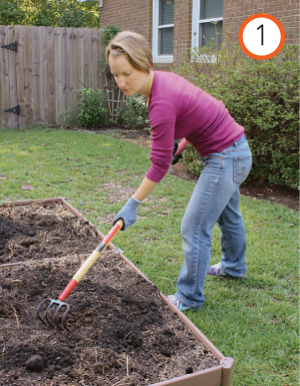
1 Before planting anything in the garden, get some worm castings (worm poop), mushroom compost, or composted cow manure to rake into the soil. Spread a one-inch layer on top of the soil and use a 4 tine claw to work it in.
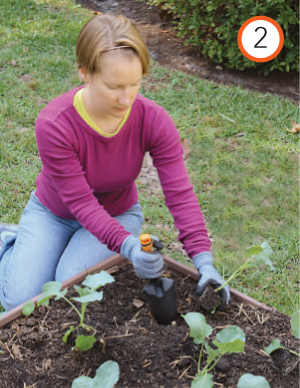
2 Once the soil is prepared, set out the plants according to spacing instructions on the plant tag. Broccoli, cabbage, and kale plants need 12 to 18 inches of space between them. Lettuce only needs 8 inches of space between plants.
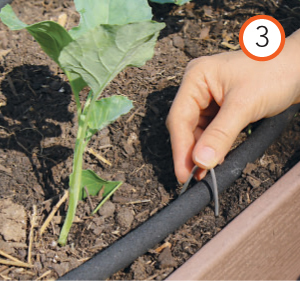
3 After you’ve planted everything, water each plant by placing the water breaker on the hose at the base of each plant and counting to ten. To make quick work of watering, put a soaker hose around your plants to water them. You can snake the hose in and out of rows and use wire pins called sod staples to hold down the hose. If the hose is in the middle of two rows, the water from it will reach plants on each side of the hose.

4 Spread mulch around the vegetable transplants. If you live in a warmer area, this will help keep water in the soil during those hot, Indian summer fall days. In cooler areas, the mulch acts to insulate the vegetables, helping them stay warmer longer into the fall. Straw is good for vegetable gardens because it is lightweight. Most garden centers and home-improvement stores sell bales of wheat straw. Just ask for it if you don’t see it.
Cool-Season Vegetables
Broccoli
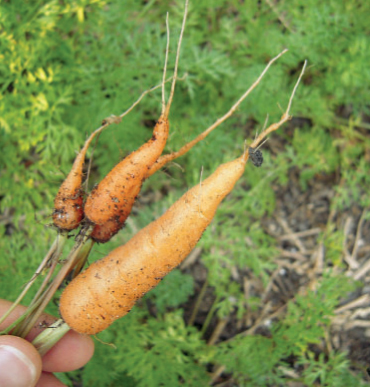
Carrot
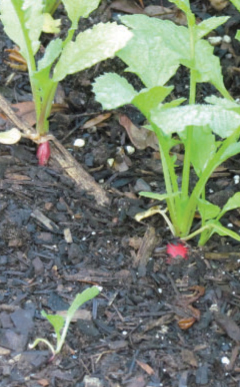
Radish
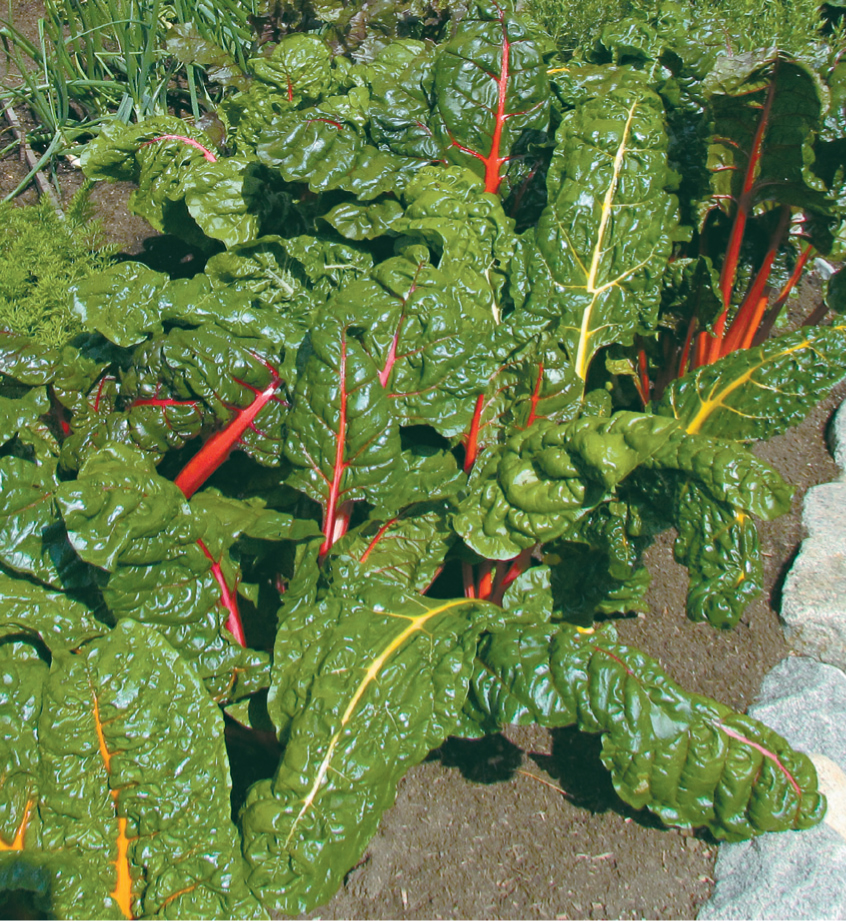
Swiss chard
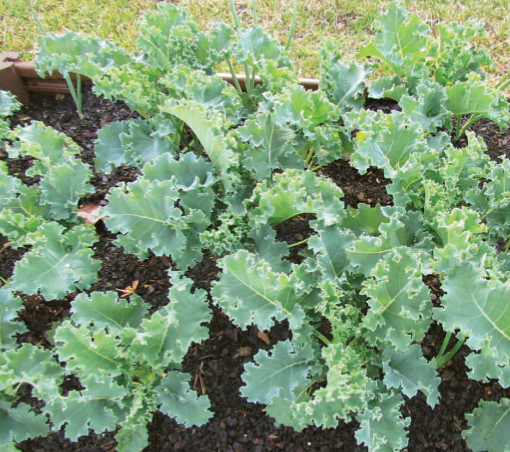
Kale
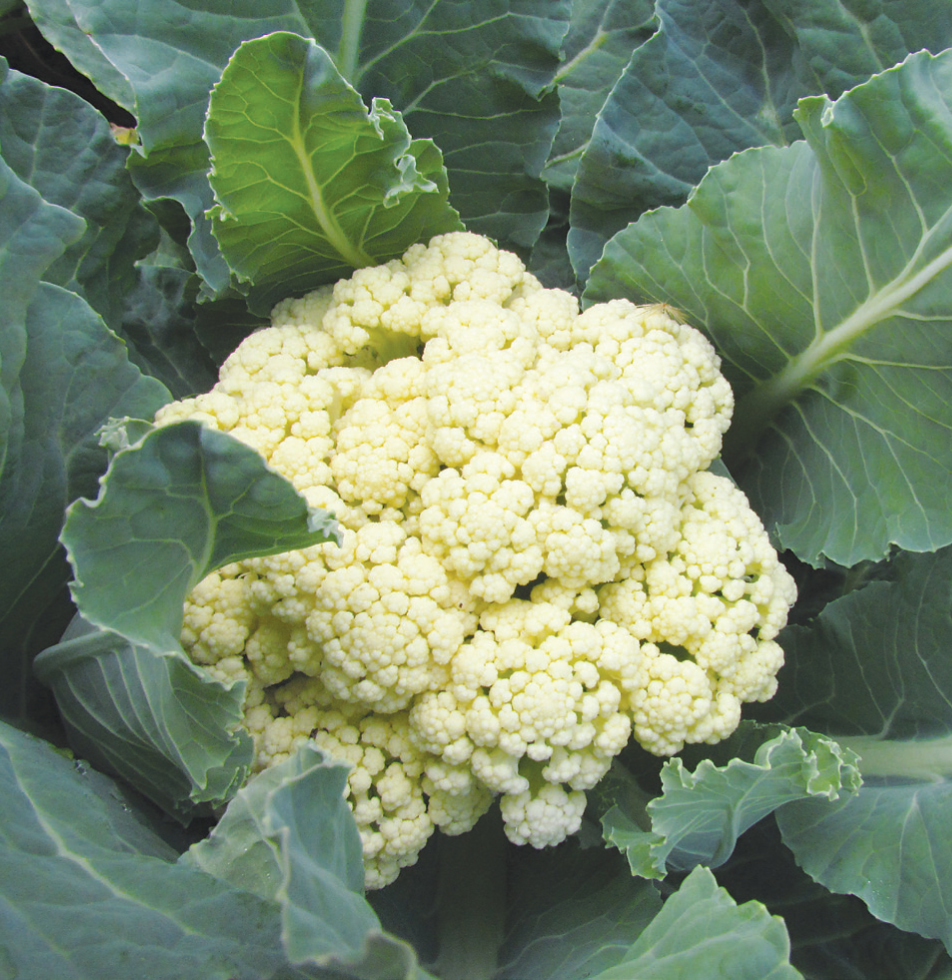
Cauliflower
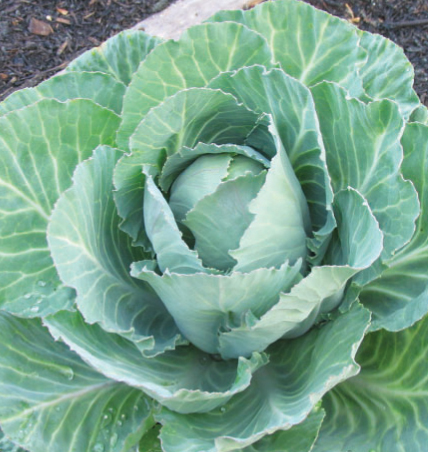
Cabbage
Planting Cool-Season Root Vegetables

1 Root vegetables, such as carrots, parsnips, radishes, turnips, and beets, are easy to grow from seed, as long as you have relatively loose, crumbly soil. If there are lots of rocks in your soil, pick them out before planting. If, when your soil is wet, a handful of it feels sticky like pottery clay, mix some sand and compost into the soil to loosen it up.
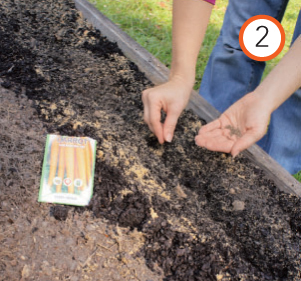
2 Check the soil pH before planting seeds. If it is lower than 6.0, sprinkle garden lime on the soil according to the package instructions and rake it in. Then, sow the seeds in garden rows according to package spacing instructions, and cover the seeds by sprinkling one-fourth inch of seed starting mix on top of them. Water the seeds daily until they sprout. Water two or three times a week after that.
Planting a Salad Bowl
This is a fun project that gives you lettuce longer. The bowl is portable, so you can move it around on colder or warmer days to give the lettuce the conditions it needs to grow.
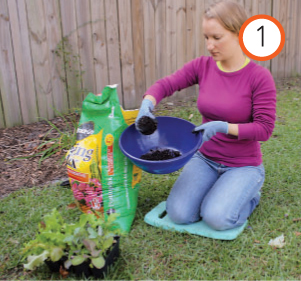
1 Purchase wide, shallow pots to plant salad bowls, or, if you have an old plastic salad bowl, you can drill holes in the bottom and plant it. Fill the bowl about halfway with potting soil.
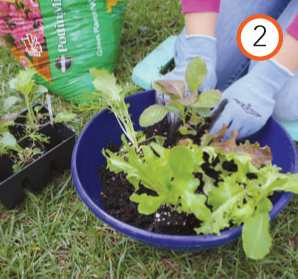
2 Plant the lettuce bowl with lettuce transplants. For extra taste, plant some bunching onions in the center of the bowl and a dill plant or two on the edges. Fill in around the plants with potting soil and water the plants. On hot days, move the bowl into some shade. On cool days, move the bowl into the sun. If temperatures are forecast to drop below freezing, bring the bowl into the garage.
You can take advantage of cover crops, even as a beginning gardener. Cover crops are sometimes called “green manure,” because after you let them grow for a few months, you will cut them down and turn them into the soil to add nutrients to the garden. Annual ryegrass, peas, clover, and wheat are all good winter cover crops that prevent soil from washing away during the winter.
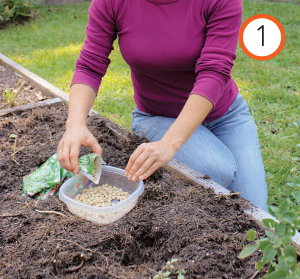
1 If you buy cover crop seeds in individual packages (particularly peas), instead of by the pound, dump all of the seed packages into a big bowl to save time opening packages later. Planting will go faster!
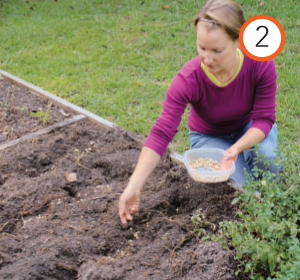
2 Use a hoe to dig rows that are six inches apart. Then, plant the seeds and cover them with one inch of soil. Cover cropping works best if you can plant a large section of the garden or an entire 4x4 raised bed with the same type of seeds. Water the seeds daily until they sprout, then water every four or five days.